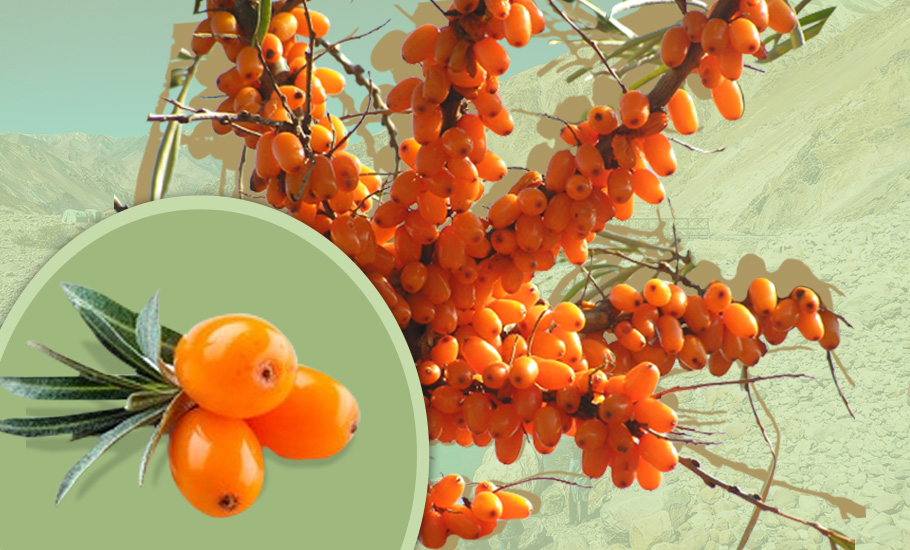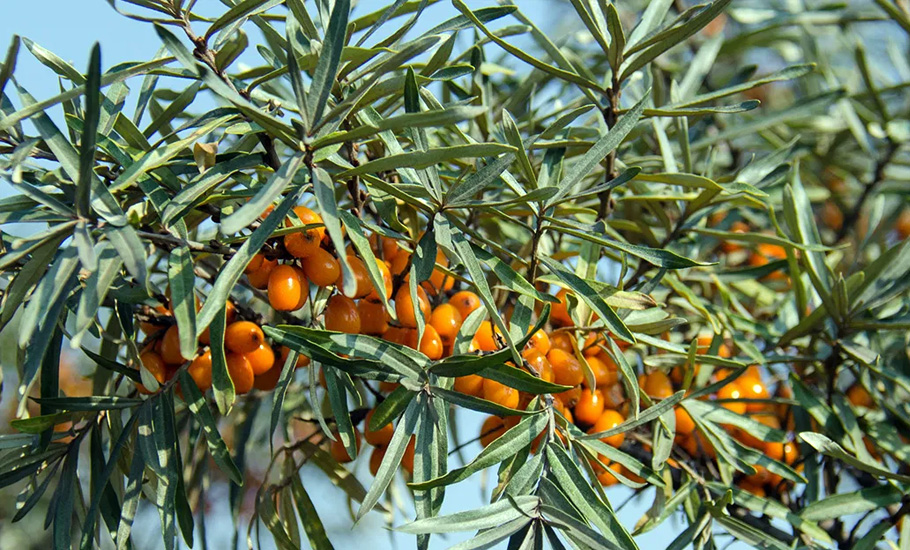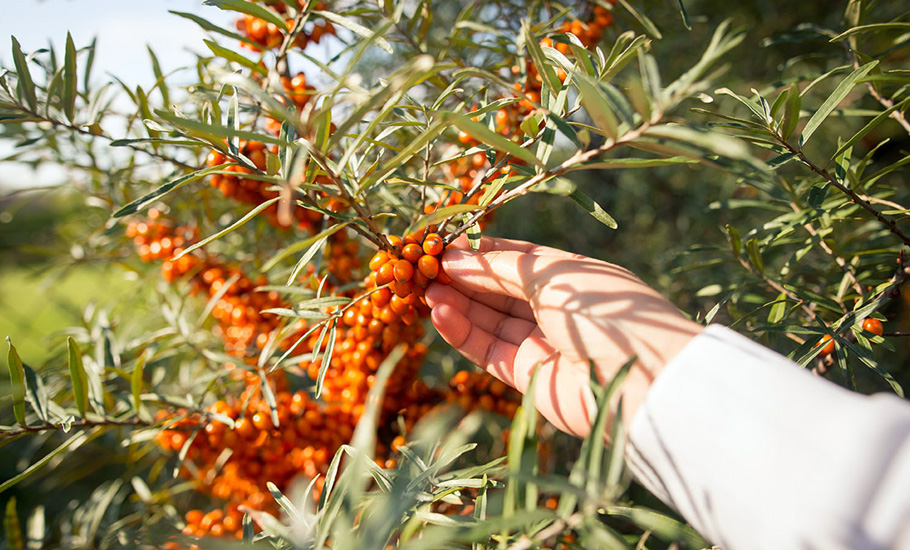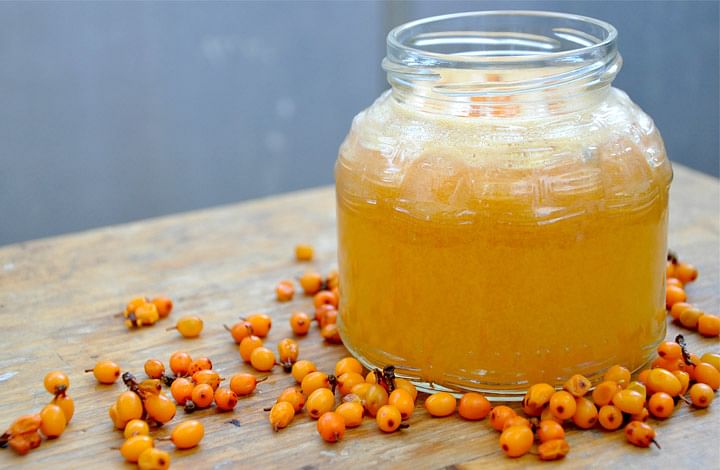
- Home
- News
- Analysis
- States
- Perspective
- Videos
- Education
- Entertainment
- Elections
- World Cup 2023
- Features
- Health
- Budget 2024-25
- Business
- Series
- NEET TANGLE
- Economy Series
- Earth Day
- Kashmir’s Frozen Turbulence
- India@75
- The legend of Ramjanmabhoomi
- Liberalisation@30
- How to tame a dragon
- Celebrating biodiversity
- Farm Matters
- 50 days of solitude
- Bringing Migrants Home
- Budget 2020
- Jharkhand Votes
- The Federal Investigates
- The Federal Impact
- Vanishing Sand
- Gandhi @ 150
- Andhra Today
- Field report
- Operation Gulmarg
- Pandemic @1 Mn in India
- The Federal Year-End
- The Zero Year
- Premium
- Science
- Brand studio
- Home
- NewsNews
- Analysis
- StatesStates
- PerspectivePerspective
- VideosVideos
- Entertainment
- ElectionsElections
- Sports
- Loading...
Sports - Features
- Budget 2024-25
- BusinessBusiness
- Premium
- Loading...
Premium

Why all is not lost for this wild berry of Ladakh, seabuckthorn
Despite the challenges, seabuckthorn cultivation and trade has remained a noticeable horticulture activity in Ladakh since 2018.

A thorny bush with orange coloured berries growing wildly in Nubra Valley in Ladakh fills the landscape of the cold deserts in several villages. For tourists traversing the high altitude Himalayas on their bikes or shut-in four wheelers, these might be just another kind of wild vegetation growing on the mountains. But for Ladakhis, the seabuckthorn—whose fruits, flowers and leaves are said...
A thorny bush with orange coloured berries growing wildly in Nubra Valley in Ladakh fills the landscape of the cold deserts in several villages. For tourists traversing the high altitude Himalayas on their bikes or shut-in four wheelers, these might be just another kind of wild vegetation growing on the mountains. But for Ladakhis, the seabuckthorn—whose fruits, flowers and leaves are said to have medicinal properties used to treat heart and skin—is touted as gold.
Chosen under Prime Minister Narendra Modi’s ‘One District One Crop’ scheme in 2020 to promote agri-clusters in 2020, the newly formed Union Territory, however, hit a major roadblock as it lost one of its major buyers—Patanjali Ayurveda Limited.
The Ramdev-led Ayurveda products-giant had in 2015 signed an MoU of transfer of technology with Defence Institute of High Altitude Research (DIHAR), Leh, for manufacturing and marketing of products made out of seabuckthorn berries from Leh.
DIHAR, which develops technology to make life easier for soldiers and commercial markets, blames the decreasing production for this lost deal.
“We sold five technologies to Patanjali. They were based on seabuckthorn for making juice, herbal supplement, tea from seabuckthorn leaves, oil from seeds and one technology in which apricot juice is blended with sea buck thorn pulp,” Dr Stobdan, a senior scientist at DIHAR, tells The Federal.
The primary process of making pulp is done by Ladakhi locals.
“As we don’t have good infrastructure here in Ladakh, the final product is prepared outside Ladakh,” he says.
Reportedly, the license agreement was valid for 10 years but there was a 5-year moratorium period during which Patanjali would have exclusive rights to develop the Leh berry.
However, Dr Stobdan says Patanjali is not a major buyer of seabuckthorn pulp in Ladakh now. They apparently needed a huge quantity, which “we were not able to harvest”.

The annual average production of seabuckthorn in Leh is around 600 metric tonnes. “But even that is not enough for a big company (like Patanjali),” he says.
Local traders unhappy
But apart from the low production, the departure of buyers from Ladakh has also affected the local players.
In 2016, Skarma Tokdan, who runs Organic Food Ladakh, a processing unit of seabuckthorn pulp in Leh, was jubilant at getting Patanjali Ayurveda as his customer.
“I had many buyers of pulp outside Ladakh but I can only export around 18 tonnes annually,” Tokdan says. “But since 2019, Patanjali has stopped buying the pulp.”
He has no idea why Patanjali stopped buying but opines that the quantity could be the reason as their demand was already huge.
Pantanjali didn’t respond to queries regarding this.
“Companies import cheap pulp from China which it is the largest producer of seabuckthorn,” Shelly Shaurya, an environment economist, says.
But that doesn’t seem to bother Tokdan who has installed machinery in his processing unit for making a pulp and jam from the fruit which he sells in Leh town.
“I keep apricot pulp as well but its demand is low,” he says. “On the other hand, seabuckthorn pulp has a high demand, but low stock.”
Many local entrepreneurs in Leh believe that if the Union territory government comes up with some favourable schemes to promote seabuckthorn, it will boost the production of the crop as well as the local economy.
Growers wary of thorny crop
However, during Covid19 pandemic, the demand for seabuckthorn pulp jumped by a huge margin as many companies were not able to import the product, usually done from China. And there is a constant demand for berry.
But despite its high demand, seabuckthorn is not preferred by local growers. Many of them still consider it as a wild crop which grows thick and scatters.
Dr. Amjid, a Leh-based researcher, says seabuckthorn has a great economic potential and the plantation is already in abundance.

“But the problem is low harvest,” the researcher says. “It’s difficult to get fruit from the hard bushes and thorns. The farmers only harvest from the outer circle of the plant.”
In order to meet the demand, the growers brutally thrash the plant, cut its branches and this hampers next year’s harvest, Dr. Amjid says.
“The need of the hour is to create awareness among farmers about the plant and come up with a comprehensive plan with subsidies for the growers because it needs good investment in maintenance,” he says.
Notably, Ladakh’s seabuckthorn species is called ‘Turkistani’ which is said to be more nutritious than those found in other parts of the Himalayan region.
“But the problem with this type of species is that it scatters all around Ladakh and it is densely thorny,” the researcher says.
Challenges before harvest
Before being fed to processing units, the villagers at community level collect the fruit.
In Nubra Valley of Ladakh, seabuckthorn is found in 23 villages on the bank of Siachin river, says Daldin Namgayal, a Congress leader from Nubra valley. “We harvest the crop in September for 20 days,” Namgayal says.
Tsewang Phuntsog, Chief Horticulture Officer, Leh, says, “We have a huge area under seabuckthorn, but we only harvest in peripheries of Leh.”
Since there are no roads to go inside the dense vegetative zones of seabuckthorn, the production slumps, he says. “The area distribution of seabuckthorn is also complicated,” he says. “Some areas come under forest, some under community, other few areas under Gompa society. The plantation is not owned by farmers themselves. We need a comprehensive policy for harvest issues and plantations.”
Demand remains high
Despite these hitches, the horticulture officer says the demand for seabuckthorn has increased over the years.
“In 2018, the harvest was 500 metric tonnes and in 2020, it rose to around 600 metric tonnes,” he says. “But presently we are getting a demand of around 1,000 metric tonnes in a year.”
Out of the total area under seabuckthorn cultivation in Ladakh, 90 percent of it is in Leh and only 10 percent is in Kargil district.
“We are presently working on a scheme in which we are increasing the area of seabuckthornup to 20 hectares of land both in Kargil and Leh, but the problem is its scattered nature,” the horticulture officer says.
“People are not ready to plant it in their fertile land as they call it an unwanted plant.”
It will take around three years to implement the scheme and provide incentives to farmers to cultivate seabuckthorn, he says.

“Roughly we have around 10 processing units in Leh. But infrastructure is still a big issue for them as they don’t have a cold storage facility while sending pulp for export.”
But despite these challenges, seabuckthorn cultivation has remained a noticeable horticulture activity since 2018 when Mission for Integrated Development of Horticulture (MIDH), GOI, wrote to the state government about it.
A year before, in 2017, a study by MIDH reported that Ladakh remains the major site for natural seabuckthorn resource with over 70 percent of the total area (13,000 ha) under the crop in the country.
“Despite the vast area under natural forest, the mean annual berry harvest is less than 5% of the total available seabuckthorn resource in the region,” it noted.
The study also maintains that approximately 0.8% of the total populations of Leh district are directly benefitted from berry collection. Average collection per individual collector was 254.8 kg resulting with a net income generation of Rs 11,466 per head in 5-10 days. The average income generation for an individual who devoted an average of 12.6 days in the season was Rs 25,840.
“Even last year during Covid-19 lockdown, seabuckthorn demand was so high that buyers were not getting the fruit even after paying Rs 70–100 to collectors,” the horticulture officer says.
Tashi Namgayal, Chairman Ladakh Autonomous Hill Development Council (LAHDC), Leh, says the council is encouraging local entrepreneurs who manufacture seabuckthorn pulp and jam, which they sell in the local market.
“But they do it on a small scale,” Namgayal says. “And our community farmers collect the berries and sell it to the processing units. 500 families are associated with the seabuckthorn collection in Leh.”
Ever since Ladakh got a separate UT status, LAHDC chairman says the region has good finances now. “We have a vision of 2030 for Leh wherein we will encourage the farmers for cultivation of Seabuckthorn,” he adds.
The LAHDC has 20 percent stake in seabuckthorn harvest in Nubra whereas in Leh, it manages the whole seabuckthorn harvest.
“And we charge less royalty from farmers,” Namgayal says. “LAHDC is not dealing with making pulp. It is only cooperative societies and private processing units who make pulp.”
Among the cooperative societies dealing with the crop is Bhami Duniya Cooperative Society. It has a collection centre in Shey village and pulp making units in Nubra valley and Leh town.
“We collect an average 75 metric tonnes of berry from farmers,” says deputy registrar, Bhami Duniya Cooperative Society. “Last year we paid farmers 65 rupees per kg for the fruit. We have buyers from Delhi and then we put pulp in containers and export it outside Ladakh.”
The cooperative has a major buyer for pulp in the form of the Biosetch company which makes medicines, shampoos and soap. “On an average,” the deputy registrar says, “We sell this company around 25 metric tonnes of pulp.”

